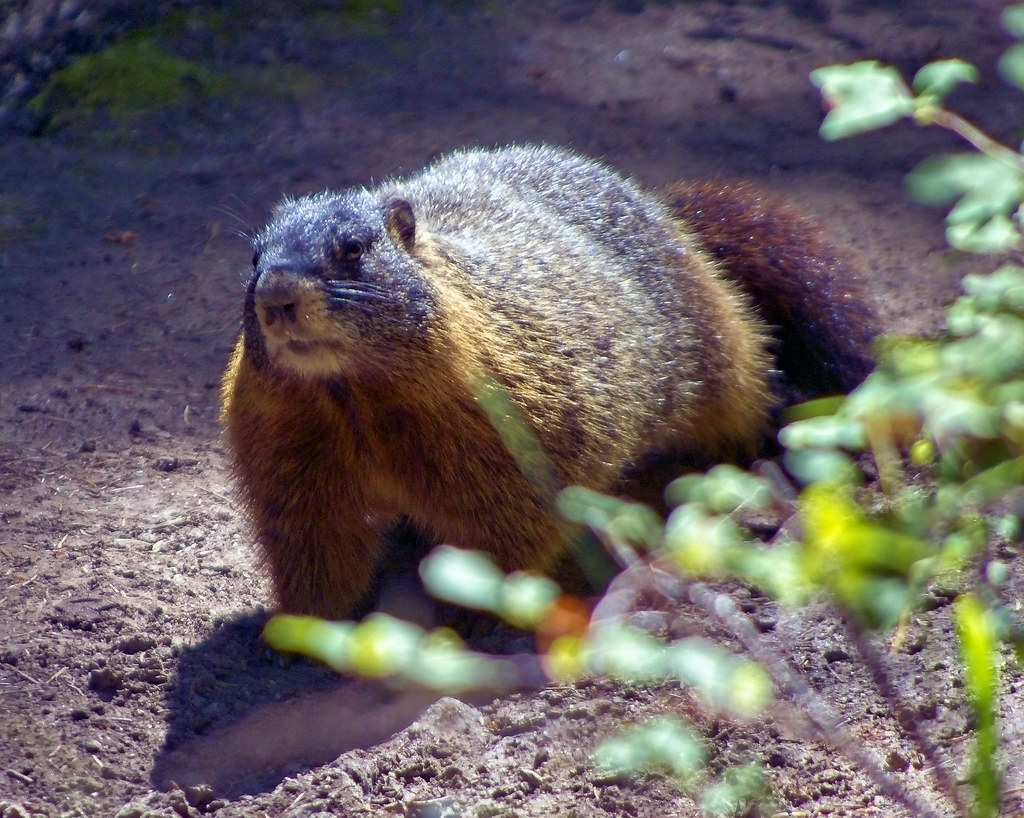Yellow-bellied marmot
Wikipedia
(accessed 9/4/22)
The yellow-bellied marmot (Marmota flaviventris), also known as the rock chuck, is a large, stout-bodied ground squirrel in the marmot genus. It is one of fourteen species of marmots, and is native to mountainous regions of southwestern Canada and western United States. The fur is mainly brown, with a dark bushy tail, yellow chest and white patch between the eyes, and they weigh up to approximately 5 kilograms (11 pounds). They live in burrows in colonies of up to twenty individuals with a single dominant male. They are diurnal and feed on plant material, insects, and bird eggs. They hibernate for approximately eight months starting in September and lasting through the winter.
The yellow-bellied marmot lives in southwestern Canada and western United States, including the Rocky Mountains and the Sierra Nevada. Northwards, its range extends into the southern British Columbia and goes eastwards up to the montane and basin regions of Wyoming, eastern Montana, Colorado, and southern Alberta. Southwards, its range extends into northern New Mexico. It inhabits steppes, meadows, talus fields, and other open habitats, sometimes on the edge of deciduous or coniferous forests. In Colorado, they are found from as low as 1,600 m (5,400 ft) to over 4,300 m (14,000 ft) of elevation. In central and eastern Washington, they are common at low elevations.
They are found in valleys, meadows, and foothills, and tend to occupy open areas which are free of vegetation. Their territory is about 2.5 hectares (6 acres) around a number of burrows dug during the summer. They choose to dig burrows under rocks, as it is less likely to be visible to predators. These predators include foxes, dogs, coyotes, wolves, and eagles. Upon seeing a predator, the yellow-bellied marmot whistles to warn the others in the area, after which it typically hides in a nearby rock pile until there is no more threat.


